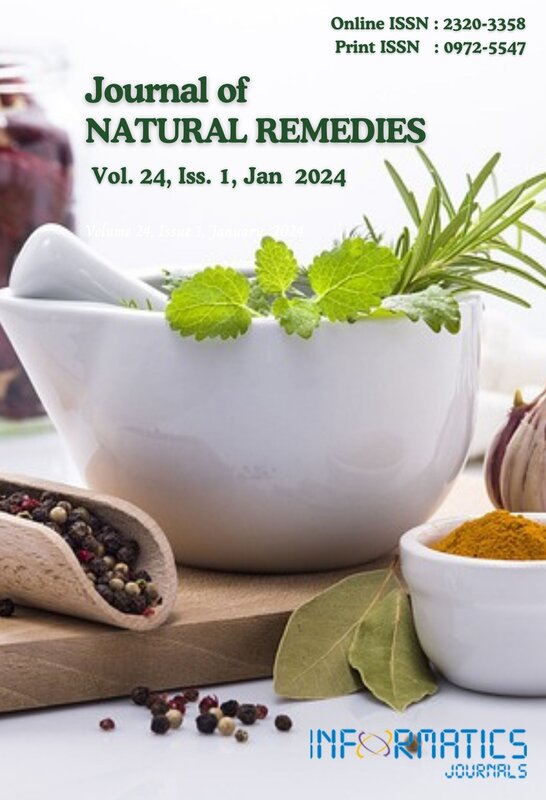Cost-effective Siddha Management of Psoriasis Vulgaris with Special Reference to Kalanjagapadai – A Case Report
DOI:
https://doi.org/10.18311/jnr/2024/34647Keywords:
Kalanjagapadai, Psoriasis, Purgation Therapy, Siddha MedicineAbstract
Psoriasis is a non-infectious and chronic inflammatory skin disorder that is characterized by well-defined erythematous plaques with silvery scales over the epidermis. It significantly affects a patient’s social and psychological well-being. Contemporary medicine offers no definitive treatment. However, corticosteroids are the drug of choice for treating psoriasis. Currently, available therapeutics cause severe side effects on the body. In the Siddha system of medicine, psoriasis can be compared with Kalanjagapadai, because most of the signs and symptoms mimic that of Plaque psoriasis. However, the principle based on the Siddha medicine approach has proven to be effective. This article presents a case of psoriasis treated for 3 months with Siddha herbo-mineral preparations and dietary restrictions. A 40-year-old male patient presented with complaints of well-defined erythematous itchy skin lesion, burning sensation, and silvery scaling all over the body for the past 3 months. Based on the symptoms Kalanjagapadai treatment was adopted here. After giving purgation therapy (Viresanam), and internal and external medications, the patient’s erythema, itching, and scaling symptoms subsided. The Psoriasis Area and Severity Index (PASI) score was decreased. Although psoriasis is intricate to treat, Siddha treatment has proven to be beneficial when using appropriate medications and therapies. In this case report, attempts were given for further scope on Psoriasis in wide-based extensive clinical trials.
Downloads
Metrics
Downloads
Published
How to Cite
Issue
Section
License
Copyright (c) 2024 V. Shalini, R. S. Parvathy, I. Sundara Ganesh, P. S. Devika, V. D. Selvam (Author)

This work is licensed under a Creative Commons Attribution 4.0 International License.
Accepted 2023-10-04
Published 2024-01-01
References
Rajput SS, Dwivedi R, Singh AK. Ayurvedic management of Psoriasis: A case study. International Journal of Innovative Pharmaceutical Sciences and Research. 2018; 6(10):22-6.
Nille GC, Chaudhary AK. Potential implications of Ayurveda in Psoriasis: A clinical case study. Journal of Ayurveda and Integrative Medicine. 2021; 12(1):172-7. https://doi.org/10.1016/j.jaim.2020.11.009 PMid:33546993 PMCid:PMC8039350 DOI: https://doi.org/10.1016/j.jaim.2020.11.009
Gaikwad SP. Successful Ayurvedic Management of Psoriasis: A Case Series.
Thiyagarajan. R. Siddha maruthuva sirappu, Indian medicine and Homeopathy, 2011.
Shanmuga Velu M. Noi nadal noi mudhal nadal thirattu mudhal paagam, Indian medicine and Homeopathy, 2014.
Prema S, Naga Rasan PV, Agasthiyar Kuzhambu, 1st edition, Tamil palkalaikazhagam, Tanjavur, 1986.
Kuppusamy mudhaliyar K.N, Utthamarayan K.S, Siddha vaidhiya thirattu, 1st edition, Indian medicine and homeopathy, Chennai, 1998.
Durai rasan G, Noi illa neri, Department of Indian medicine and Homeopathy, Chennai, 1999.
Chadha YR. The Wealth of India Raw Materials: CSIR: New Delhi; 1989.
Ganapathy P, Elumalai K, Arumugam MK, Amulya CS, Manivel R. Anticancer potential of Siddha formulations against oral cancer cell line in vitro. Trends in Medicine. 2019; 19:1-6. https://doi.org/10.15761/TiM.1000192 DOI: https://doi.org/10.15761/TiM.1000192
Sharma A, Mathur R, Dixit VP. Hypocholesterolemic activity of nut shell extract of Semecarpus anacardium (Bhilawa) in cholesterol-fed rabbits. Indian J Exp Biol. 1995; 33:444-8.
Kumar S, Chelvi KM, Faridha A, Gunalan G. In vitro antioxidant property of Siddha formulation, Irunelli karpam. Journal of Pharmacy Research. 2017; 11(9):1135.
Stephen W. Parcel, sulfur in human nutrition and applications in medicine. Altern Med Rev. 2002; 7(1):22–44.
Varma SR, Sivaprakasam TO, Arumugam I, Dilip N, Raghuraman M, Pavan KB. In vitro anti-inflammatory and skin protective properties of Virgin coconut oil. J Tradit Complement Med. 2019; 9(1):5–14. https://doi.org/10.1016/j. jtcme.2017.06.012 PMid:30671361 PMCid:PMC6335493 DOI: https://doi.org/10.1016/j.jtcme.2017.06.012

 V. Shalini
V. Shalini









 0.35
0.35 24
24 0.161
0.161